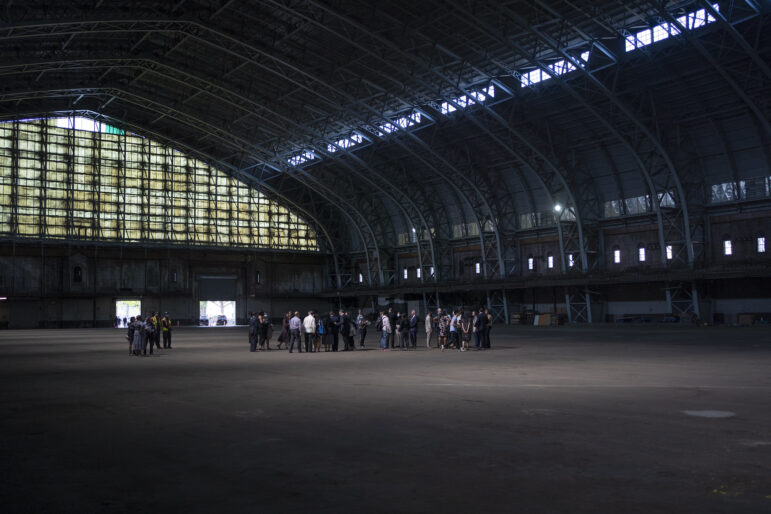Greg Wortham has had a busy week. As vice president of 1st Rochdale Cooperative, a Manhattan-based green energy company, he is already reaping the rewards of the August 14 blackout. Wortham says he’s gotten approximately 30 calls this week from city residents and business owners hoping to generate their own electricity.
“Anything that draws less electricity within the city makes us less dependent on Niagara, Ohio, and [less vulnerable] to problems in the system,” Wortham said.
And it’s not just individual consumers who want to go green. As City Limits reported in “Future Shock” [March 2003], several city agencies have started to increase their use of renewable energy resources, including solar panels and fuel cells, which generate power locally.
Stuyvesant Cove Park, a building complex along the East River, survived the blackout with ease. Built by Community Environmental Center, a local nonprofit, it runs on solar energy, one of several projects funded in part by the New York State Energy and Development Authority, which has set aside $1.4 million in grants for projects like these. “We are not even connected to the grid,” said director Rick Cherry.
But the blackout was a stark reminder that most of us still are.
“Studies show that New York City has enough space to generate at least 15 to 20 percent of its electricity from just solar panels,” said Richard Perez, senior research associate at University at Albany. “Right now [it is only producing] a tiny fraction of 1 percent. Even if you manage to produce 10 to 15 percent, it could go a long way toward avoiding another blackout.”
Groups like the Cherry Tree Association, which runs a community center in Mott Haven, are moving forward on their own. Funded by Clean Air Communities/Northeast States Clean Air Foundation (NESCAF), the center recently started work on a 15 kilowatt system that would use solar energy to bypass the grid. NESCAF is now offering $3.5 million to other groups that want to make the switch.
Unfortunately, money alone won’t curb the city’s dependence on the power grid. Con Ed, which has been providing the city’s energy for the past 180 years, has the exclusive license to cross a city street or public property in order to transfer power. That means a group of New Yorkers who want to form a co-op and buy their own renewable generation unit have to be on the same side of the street.
“The technology has made tremendous improvements,” Wortham said. “But the rules haven’t caught up.”









